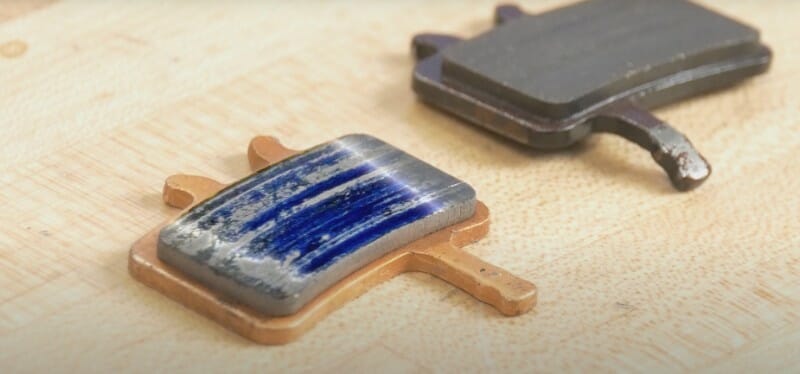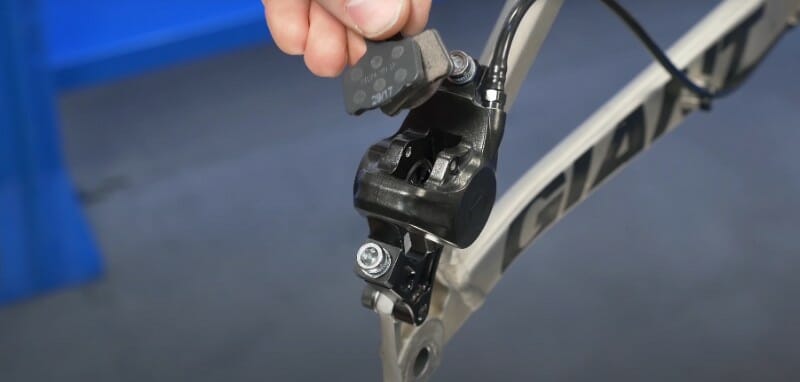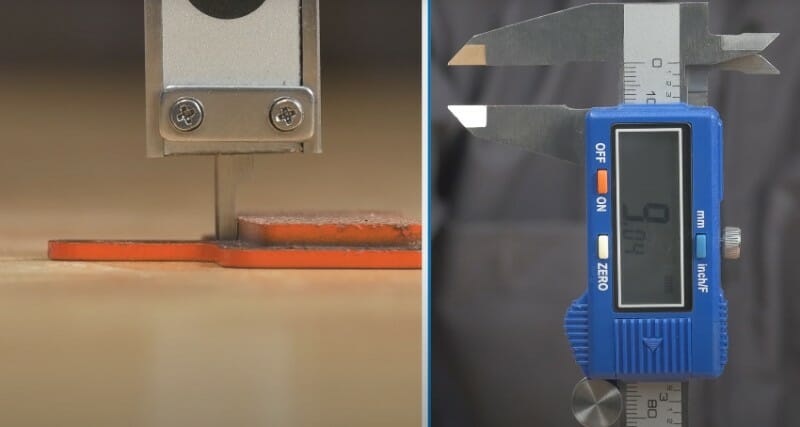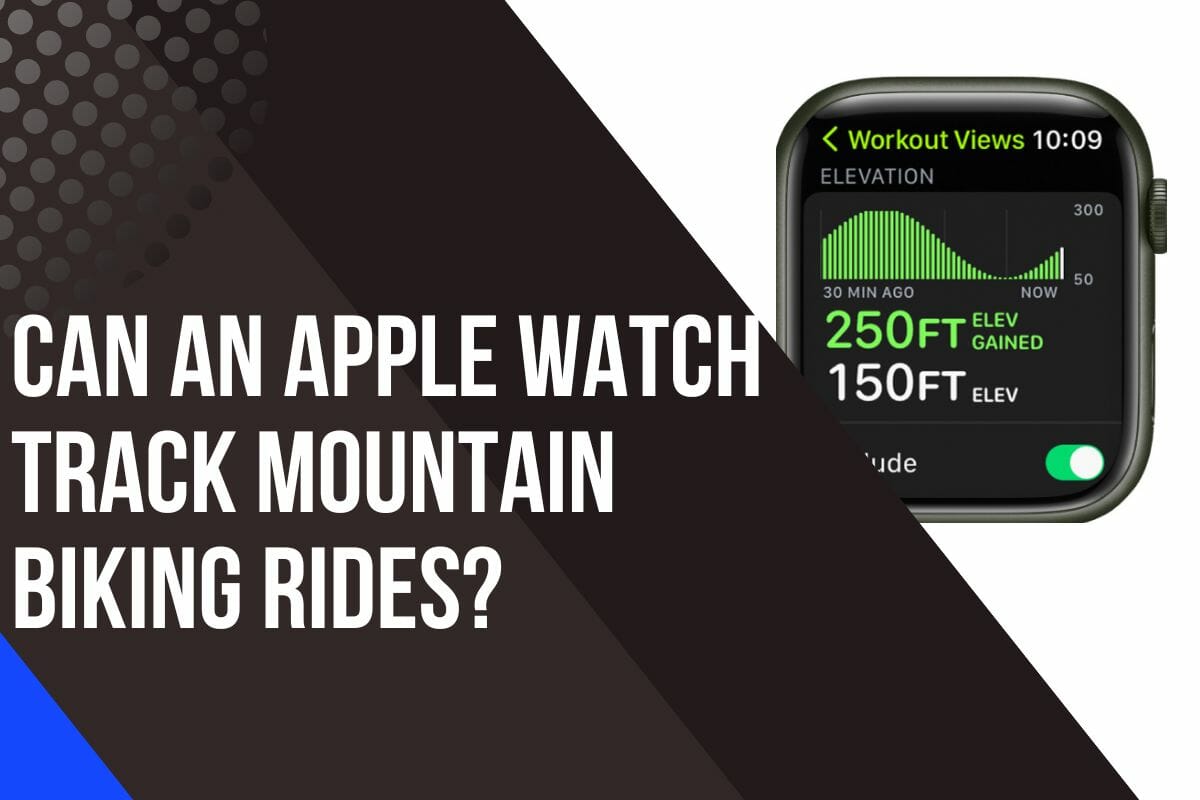How Long Do Mountain Bike Brake Pads Last?

Are you an avid mountain biker who loves hitting the trails? If so, then you know how important it is to have reliable brake pads.
After all, they are what keep you safe and in control when you’re flying down those steep descents.
But how long do mountain bike brake pads actually last?
On average, organic / resin disc brake pads typically last around 500-700 miles and sintered metal disc brake pads typically last around 1,000-1,250 miles. However, this range can vary greatly depending on several factors such as braking style, weight, brake pad type, and riding conditions.
Below, we’ll delve into the factors that can impact the lifespan of your mountain bike brake pads and provide you with some general guidelines on when it’s time to swap them out for new ones.
What Factors Determine How Long They Last?
The type of brake pad material is one of the most important factors. Another important factor is how and where you use your bike. If you do a lot of downhill riding or aggressive braking, then the brake pads will likely wear out more quickly.
Below, I explain the most common factors that determine how long mountain bike brake pads last.
Brake Pad Material
There are three common types of brake pad materials:
| Organic | Semi-Metallic | Metallic | |
|---|---|---|---|
| Noise Level | Low | Medium | High |
| Initial Bite | High | Medium-High | Medium |
| Rotor Longevity | High | Medium-High | Medium |
| Pad Lifespan (Dry condition) | Low | Medium | High |
| Pad Lifespan (Wet condition) | Very Low | Medium | Medium-High |
Organic Brake Pads
Organic brake pads, crafted from a blend of natural elements like Kevlar, rubber, and resin, offer an affordable and noise-free braking option for riders.
However, they do come with a few drawbacks. One downside is their tendency to wear out quicker, requiring more frequent replacement than other options.
In wet or muddy conditions, organic brake pads may not perform as effectively, which can be problematic for avid mountain bikers.
Nevertheless, for riders who mainly venture into dry terrains and seek a pocket-friendly choice, these pads can still be a great fit.
They are particularly favored by those who prioritize a serene riding experience, devoid of disruptive noise.
Semi-metallic Brake Pads

Semi-metallic brake pads are an excellent alternative to organic brake pads for mountain bike riders looking for improved durability and performance. These brake pads are made from a combination of metal and organic materials, providing a balanced blend of benefits.
These pads combine metal and organic materials to provide a balanced blend of benefits. With enhanced stopping power, thanks to the inclusion of metal compounds, you can trust these pads to perform even in demanding situations.
Sintered / Metallic Brake Pads
Metallic pads, also known as ‘metal’ pads, are made with a mix of strong metals like steel, iron, copper, and other alloys. These pads are incredibly durable and can easily handle high temperatures. They are perfect for intense downhill mountain biking or any heavy-duty riding situations.
What is The Lifespan of Different Bike Brake Pad Types?
Organic brake pads typically last up to 700 miles while semi-metallic and metallic pads can endure up to 1,250 miles.
When evaluating the lifespan of your brake pads, consider factors such as your riding style, terrain, and maintenance habits.
Keep in mind that these estimations are approximate and can vary depending on factors like riding conditions and maintenance.
Harsh weather, rough terrain, and improper maintenance can shorten the lifespan of brake pads. Regularly inspecting your brake pads for wear and performing maintenance can help extend their lifespan.
Braking Style
The way you brake can make a big difference. To make them last longer, avoid harsh braking and excessive use of your brakes.
Instead, try applying the brakes gradually and smoothly, using both the front and rear brakes evenly.
This will reduce stress on the pads and extend their lifespan. By mastering proper braking techniques, you’ll not only save money on brake pad replacements but also ensure a safe and controlled stopping experience.
So remember, brake with finesse and share the workload between your brakes.
Weather – Summer or Winter
In both summer and winter, the weather can greatly impact the lifespan of mountain bike brake pads.
During summer, the excessive heat and direct sunlight can make the pads brittle and less effective at providing friction.
The intense heat can also weaken the adhesive holding the pads in place, risking pad failure.
On the other hand, winter weather causes the pads to harden and lose their grip on the brake rotors.
The icy conditions can erode the pads, reducing their friction.
To ensure longer-lasting brake pads, regularly inspect them for damage, use pads suited for specific weather conditions, and seek shade or shelter in extreme temperatures.
Terrain
The type of terrain you ride on greatly affects the lifespan of your mountain bike brake pads.
Rougher terrains like mountain trails and gravel roads put more strain on the pads, causing them to wear out faster.
Riding on uneven surfaces requires frequent use of the brakes, generating heat and friction that deteriorates the pads quickly.
Obstacles such as mud, sand, and rocks also contribute to the decrease in lifespan.
Riding through muddy conditions makes the brake pads work harder to overcome the resistance, while sand and gravel can get stuck between the pads and rotors, accelerating wear.
To make your brake pads last longer, choose the right type for your terrain and perform regular maintenance.
Clean your bike and inspect the pads for wear regularly. It’s recommended to replace the pads when they are around 2-3 millimeters thick or as advised by the manufacturer.
Wet Conditions
The water from the rain or splashing on wet surfaces can get on your brake pads and rotors, which makes them less effective.
This happens because the water creates a layer between the pad and rotor, making it harder for them to create friction and slow you down.
It’s not just the wetness that can cause problems for your brake pads. If you ride through water that has chemicals in it to melt ice and snow, those chemicals can make your brake pads wear out even faster.
These chemicals are often used on roads in the winter, and when your bike tires roll through the water, it can wash onto your brake pads and make them wear down quicker.
After you’ve been riding in the rain or through wet areas, take a clean cloth and wipe down your brake pads and rotors to get rid of any moisture. This will help keep the pads and rotors in good contact with each other.
Weight
If you’re a heavier rider, your weight can significantly impact the lifespan of your bike brake pads.
When you apply pressure to the brake levers, the force exerted on the pads increases, causing them to wear out faster.
Not only that, but your weight also puts strain on the entire braking system, leading to heat buildup and further wear on the pads.
How Do I Know When to Replace My Bike Brake Pads?
When it’s time to replace your disc brake pads, it can be a little challenging to decide. To keep yourself safe, it’s recommended to change them when they wear down to 1.5mm thick. This goes for both mountain bikes and road bikes.
As you ride your bike, the brake pads gradually wear down due to constant use and friction. There are several signs that indicate it’s time to replace your bike brakes:
Listen for Sounds
A grinding or squealing sound when applying the brake can be a warning sign of advanced brake pad wear.
As you ride your bike, the brake pads gradually wear down due to the friction and pressure applied when braking.
This makes the brake pad material thinner, causing the wear indicator to come into contact with the rim or rotor.
When this metal-to-metal contact occurs, you’ll hear a high-pitched sound, telling you that it’s time to replace the brake pads.
It’s crucial not to ignore this sound and continue using worn brake pads as it can have serious consequences.
Reduced Braking Ability
When your brake pads become worn, you may notice a decrease in braking power.
This means it takes longer for your bike to come to a complete stop, which can be dangerous, especially in emergency situations.
Sudden and aggressive braking can accelerate the wear on brake pads, further reducing their effectiveness.
Vibration or Shuddering
When your brake pads don’t make even contact with the brake rotor, it can lead to uneven braking force and cause those annoying vibrations.
Contamination from dirt, oil, or debris can also mess with your brake pads and make them less effective, resulting in vibrations.
Visual Inspection

When it comes to determining the lifespan of your mountain bike brake pads, performing a visual inspection is a crucial step.
How Much Do Bike Brake Pads Cost?
The cost of bike brake pads can vary depending on the brand, quality, and type of brake pads. On average, a set of bike brake pads can range from $8 to $35.
Shimano offers a low-end disc brake for just $8, while SRAM provides a high-end option for $26. If rim brakes are more your style, SRAM have you covered with an $8 choice, and SwissStop offers a premium selection for $30.
However, be cautious not to harm your bike’s brake system in the process.
Opting for a professional repair can cost you approximately $80 to $150, but prices may differ based on the specific parts that require fixing or replacement.
How Hard Is It to Change Bike Brake Pads?
Replacing brake pads on your bike might seem daunting at first, but fear not! It’s actually a straightforward task that you can tackle with just a few tools.
By taking charge of your own bike maintenance, not only will you save money, but you’ll also feel empowered.
The process varies depending on the type of brakes you have.
For rim brakes, loosen the small screw or pin that holds the old brake pad in place, then simply slide in the new one and tighten the screw or pin.
Just make sure it’s aligned properly for optimal braking performance. Watch the video below for a tutorial on how to replace a rim brake.
If you have disc brakes, you might need to remove the wheel to access the brake caliper.
From there, it’s a matter of either sliding out the old pad and inserting the new one or replacing the entire brake pad assembly by removing a retaining clip.
Remember to consult the manufacturer’s instructions for your specific brake system. Watch the video below for a tutorial on how to replace a disc brake.
How to Care For and Maintain Bike Brake Pads
Proper care and maintenance of your brake pads are essential to ensure they last as long as possible and continue to provide optimal braking performance.
By following a few simple steps below, you can keep your brake pads in excellent condition and avoid any unnecessary wear or damage.
Install Your Pads Properly
To ensure safe and effective braking, it is crucial to properly install your bike brake pads.
Cleaning The Pads
Regular cleaning is essential for the optimal performance and longevity of mountain bike brake pads. Here are the steps to follow:
Checking Pad Thickness

Using a Proper Braking Technique
To make your mountain bike brake pads last longer, it’s crucial to master the art of proper braking.
Don’t underestimate the power of anticipation – avoid sudden and frequent braking by planning ahead and starting to slow down earlier.
Instead of squeezing your brakes abruptly, apply gradual and consistent pressure to distribute the stopping force evenly, preventing unnecessary strain on the pads.
Remember to utilize both your front and rear brakes to share the workload and extend the life of your brake pads.
Regular Maintenance
Final Thoughts
The lifespan of mountain bike brake pads can vary depending on various factors such as riding conditions, frequency of use, and maintenance practices.
On average, brake pads can last anywhere from 700 to 1,250 miles or more. It’s important to regularly inspect your brake pads for wear and replace them when necessary to ensure optimal braking performance and rider safety.
Remember, mountain biking is dangerous and a lot is at stake, so it’s better to be safe than sorry. Don’t hesitate to replace your brake pads if you notice any signs of wear or decreased braking power.





